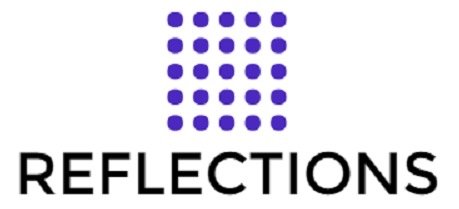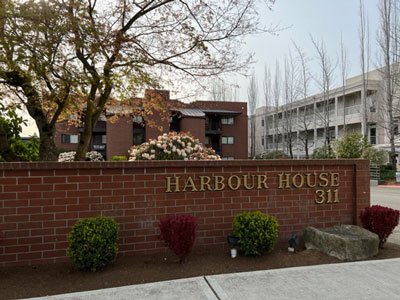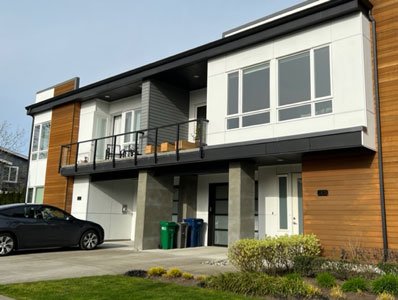Stepping Up to Condominium Leadership
Stepping Up to Condominium Leadership
My First Condo
I had been out of school for just two years and married for one year when my husband and I bought our first home – a two-bedroom condominium unit on a golf course. It was very exciting and a little scary to be new homeowners, with a large mortgage, while only 27 and relatively new to our careers. We wanted to live in a condominium to avoid the tasks of yard and building maintenance and had an optimistic view of a carefree lifestyle where neighbors cooperated to make life better for everyone. I understood the legal aspects of condominium life. My husband and I were both attorneys and one of my assignments at my downtown Seattle law firm was reviewing condominium transactions for our financial institution client.
Our complex was small, fewer than twenty 2-story townhomes, and the buildings were new, so there was a get-acquainted dinner not long after we moved in. It was a sit-down dinner at a nearby country club. We were eager to get to know our neighbors and looked forward to the chance to patronize this attractive venue. In exchange for the privilege of living on the golf course, we were required to be social members of the country club, so this event was the beginning of our relationship with this private club, as well as with our homeowners association. The event began with social time, then we took our seats at a u-shaped table which allowed us all to see one another.
We looked a little out of place in this group. My husband and I were both at least 20 years younger than any of the other people seated at the table. Most appeared to be of retirement age, or nearly so. We shouldn’t have been surprised, since a golf course development with 2-bedroom units is not likely to attract families or young couples planning to start a family, but we had not thought about that issue. The most memorable thing about the event, however, was not the ages of fellow owners. Our immediate next door neighbor chose to entertain the group with some “humor” before our meal started. At first I wasn’t sure I was hearing him right and then I realized he was telling disgusting racist jokes of a sort I had never heard before. I was appalled but also frozen. I wanted to walk out or call out an objection, but I also wanted to be able to enjoy the dinner I had paid for and didn’t want to start my acquaintance with my new neighbors with a political/ethical protest. I don’t remember what happened during the balance of the evening. I know that for decades I’ve felt like I could have handled the situation better and that my silence may have looked like consent to offensive speech.
My First Condo Board Position
Despite that strange introduction to my new community or perhaps because of that demonstration of lack of quality leadership, I volunteered to serve on the condo board of directors and then became president of the HOA (homeowners association). I don’t remember many details of our board activities, but I recall that one of the oldest men on the board turned out to be one of my strongest supporters. Those who were somewhat closer to my age seemed to always be challenging my leadership. Because our association was so small, we had no management company to guide us and my professional opinions about how things should be run were not always well received. The Community Association Institute (CAI), a national organization that offers training and resources to homeowners’ associations, became a valuable resource. I purchased their publications and used the guidance they provided to back up my advice about governance of our association. I also shared my training and experience at CAI events, helping CAI put on local training programs and facilitating the creation of a Washington State Chapter of CAI, where I served as the first president. I still believed in the value of condominium homes as good for residents and good for the community, but I knew that trained and competent leadership was essential to their success.
Logo of Washington State Chapter of Community Associations Institute
Getting Away from Golf Balls
After my husband and I became parents, we questioned the advisability of living on a golf course. When balls hit the building they made a tremendous racket and we were nervous about using our deck, especially as a play area for the baby who quickly became a toddler. We looked for a house and found one with four bedrooms, at the end of a cul de sac, with a large yard filled with beautiful evergreen trees. It was love at first sight and we didn’t mind leaving condominium life behind.
During our years living in the golf course townhome, I expanded the legal work I did for real estate clients. I represented a variety of condominium associations, a family that created a condominium out of property they owned, and a number of individual unit owners. By the time we moved to our 4-bedroom house, however, I was ready to move on. I was sworn in as a King County District Court judge. My private practice as a condominium attorney ceased, but I did occasionally have condominium issues show up on my small claims court docket. My employment at the court continued for the next 13 years.
Our 2-story, 4-bedroom cul de sac home served us well for 15 years. As our son prepared to go away to college, my husband and I were getting tired of lawn mowing, gardening, window-washing, moss removal and dealing with pest infestations (ants and rats or mice). Add to that concern about our tall evergreen trees crashing into the house, as happened to one of our neighbors. Two of our large trees fell over in separate storms but only destroyed a gutter and a section of our fence. Shortly after moving into the house we discovered water in the crawlspace and had to install an expensive drainage system, guaranteed for ten years, so we worried about whether that would now fail. We had repainted the exterior of the house but we knew that we would soon need to do further maintenance or upgrading inside the house and moving to a new place seemed to be a better option.
My Second Condo Purchase
On a just-for-fun drive through downtown Kirkland I spotted a new condominium development advertising units available. Just as the home on the cul de sac once seemed like the perfect home for us, this new development was now an ideal location. We were tired of the maintenance tasks that go along with owning a single family home. I loved the idea of being in a walking community, with stores, restaurants, the library, buses, churches and entertainment venues within a block or two. New construction meant no need for major upgrades for years to come, or so we thought. To be sure this was the place for us, we engaged a real estate agent to show us other options, but no other location or housing style met our needs. This 2-bedroom condo apartment, with 300 fewer square feet of space, was priced at double the expected sale price of our existing 4-bedroom home. The reason was the location and the cost of new construction. To many of our friends, however, we were downsizing, with the implication of fewer, rather than greater costs. It took a while to figure out how we would pay for this more expensive home and to determine if the substantial price was worth it. We knew the actual cost of maintaining a single family home was a lot more than the amount of the mortgage payment, and the monthly assessments for the new home would actually save us money compared to the costs we had incurred for the services and needed repairs we had hired to be done.
There were three of us moving to this new home. Our son was off to college and assured us he did not need a bedroom in the condo unit. Instead, we got a sofa bed for the living room, where he stayed during school vacations. The second bedroom was occupied by our daughter, who was then in 5th Grade. We worried a little about bringing a child to a building with only one other youngster, but she would be attending a nearby public school and we figured she would make friends there. Getting her into a good school district was one of the motivations for our move. We had been disappointed with our son’s public elementary school, resulting in a transfer to private school for six years. We knew we could not afford to do that for our daughter. (I had recently retired from my judicial position, so we now had only one employed adult in the family.) The money saved on private school tuition helped us make our new mortgage payments. Our son’s college expenses were mostly taken care of by his grandparents and by his part-time employment, so we were largely relieved from that expense.
My Second Condo Presidency
It took very little time for me to be recruited to serve on the board of our new development. I was eager to get to know other residents and to help make sure the association was properly run. I soon became board president. As was true in my earlier board service, I found some of the other board members very dedicated and supportive, but one of them was difficult to work with. He was serving as secretary and, when the minutes came out, there were many serious errors that he was reluctant to admit to. My solution was to have three-part forms printed up. Every motion went on one of these forms, along with the outcome of the motion. The forms were reviewed and signed at the meeting with copies for the president, secretary and property manager. It was a hassle to do this, but was better than arguing about decisions days after they were made.
The big challenge for our new board was the transition from being a builder-managed association to a resident-controlled association. Our board was responsible for two buildings, two parking garages, two open parking lots, landscaped grounds, common hallways and two elevators, along with limited common areas assigned to 81 residential units and one commercial unit. In addition to building maintenance, we needed to set the rules for residents, manage building insurance and alarm systems, pay common utility expenses, handle collection of assessments, and maintain a long-term reserve fund for major expenses, such as painting and roof replacement.
Our development was large enough to engage professional management, but not large enough to afford a resident manager or resident maintenance staff. Unstated but immediately apparent was the responsibility for responding to questions and concerns from residents. This sometimes entailed educating new residents about how a condominium development functions, with individual unit owners responsible for most matters arising inside individual units, such as plumbing problems, changing lightbulbs and insurance on their individual units. Other times we needed to take action to enforce rules about pets, noise, rentals, late payments or unauthorized “improvements” inconsistent with our covenants and rules.
During my three years on this condo board, the biggest challenge was arranging for an independent review of the construction of our building and determining what needed to be done to deal with construction defects. We spent substantial time negotiating with our developer and ultimately brought a lawsuit which dragged on for years, but ultimately resulted in a favorable settlement, allowing us the funds needed to replace all exterior windows, which had been installed improperly, and replacing all the exterior “fake” stucco, since the material used did not allow appropriate ventilation, creating a risk that our wood frame structure would rot.
I left the board at the end of my term. I was tired of dealing with the many conflicts that had arisen, but also was satisfied that capable leaders had stepped forward to guide our association into the future. I have stayed out of condominium leadership in the years since then, but I always express my appreciation to those who have been willing to serve. I attend every annual meeting of the HOA, and I’m happy to help new residents understand how our association functions. Our condominium board members have been hard-working and conscientious, and their service has helped us maintain a quality facility. I’m very grateful for all who have served.
Looking back on My Condo Experiences
This blog post has come about because a friend mentioned that she recently joined the board of her condominium. At the same time, three of my walking companions have told me of challenges they are facing in their residential communities. I decided it was time for me to share some of my experiences and I solicited stories from Facebook acquaintances as well. I wrote an earlier blog post about purchasing a condominium unit and felt it was time to address leadership issues.
Help is available from the Community Associations Institute
Should you serve on your condominium or HOA board?
1. It’s a great way to get acquainted with your neighbors and to learn the ins and outs of how your building functions. Knowing your neighbors and knowing how your property functions makes day-to-day living more pleasant and less stressful, but it can also be very important in an emergency.
2. You will need to have a good understanding of the documents that form the basis of your home ownership. This will include the state laws that govern condominiums, the declaration and covenants that were filed by your developer, along with any amendments and easements or other restrictions which are noted on your title insurance policy. Your association should also have Articles of Incorporation, Bylaws and House Rules. If you have a property manager, you will want to understand the terms of the management contract, so it is clear what their responsibilities are. As a board member, you need to become familiar with the budget and monthly financial reports of the association, as well as the documents pertaining to your building reserve account. Pay attention to whether monthly assessments are being paid on a current basis and whether the funds in the reserve account appear adequate for upcoming expenses. Finally, review the minutes of board meetings for the past year so that you are familiar with the issues the board has been dealing with.
3. Since you may not fully understand the documents you review, request that the board provide an orientation for new board members and consider educating yourself by review of publications about HOA management, such as those from the Community Associations Institute (CAI). The local chapter of CAI offers training sessions which would be worth attending. Any cost should be covered by your HOA.
4. Board members usually divide up areas of responsibility. Some will deal with finance, others with landscaping, building maintenance or insurance. Communication through a website or newsletter might also be a board function. Think about where your board needs help and where your interests and skills can best be put to use. Recruiting non-board members to help with these tasks is an excellent idea, because it is a good way of identifying who would make a good future board candidate. It also allows the volunteer work to be spread around to more people.
5. Brace yourself for unfair criticism and practice being respectful towards those with different and possibly unreasonable opinions or requests. Any skills you develop for dealing with difficult people may serve you well in your own work environment or possibly even in your family. Give your owners lots of opportunities to ask questions and plenty of notice regarding upcoming meetings or changes being considered in house rules to help minimize resistance or hostility.
6. Here are some areas of frequent conflict:
a. Raising assessments to provide adequate funds in the reserve account.
b. Restricting the number of rentals, enforcing those restrictions, and ensuring that renters comply with condo rules.
c. Controlling the number and type of pets and dealing with problems that arise in the common areas, such as noise, damage to grounds, carpets or furnishings, and carpet-cleaning.
d. Aesthetic issues, such as door or window displays, adding air conditioners, installing awnings or window coverings, holiday decorations, inappropriate items stored on decks or patios.
e. Safety and health issues, such as fire alarm inspections, dryer vent cleaning, timely replacement of water heaters, servicing of fireplaces, appropriate use of garage storage, hoarding (excessive clutter), etc.
f. Noise arising from pets, playing musical instruments, video games, fans, footsteps on hard-surface floors and partying.
g. The need for board approval of remodeling projects, to ensure that proper permits are obtained, that there will be no adverse effects on the structure of the building, and so that the board can hold the contractor to rules regarding noise, hours work can be performed, and any special procedures regarding building access, workspace, storage, and disposal of waste.
h. Changes in utilities, such as internet contractors, cable or satellite TV, plug-ins for electric cars, etc.
i. Package delivery systems, mailbox security, delivery access to the building, security systems.
7. I once thought that part of the board’s responsibility was to arrange social events for residents and to maintain a roster of residents to be shared with all owners. There is usually no responsibility to plan social events and the board will probably be so busy with required tasks that the closest thing to a social event may be cookies at the annual meeting. I’ve learned that many people have concerns about their privacy and that disclosing personal information, such as names, e-mail addresses and phone numbers, can create legal problems, so your HOA will probably not distribute a roster of owners and residents, although that information must be maintained as part of the management of the association. There may well be non-board members willing to plan a holiday party or special event for residents and that type of activity may be good for promoting friendships and goodwill, but that is not a board responsibility, unless called for in your documents.
8. Board members need to become familiar with professionals and contractors who provide services to your HOA. For many associations, a property management firm will be the contractor you work with most closely. Attorneys may be needed to collect unpaid assessments, help draft new rules or interpret existing law, or help resolve disputes. Accountants will need to perform a periodic review of your financial records, and construction professionals can help you assess the useful life of your facilities and estimate repair and replacement costs. Landscape firms will be called on to care for your grounds, maintain sprinkler systems, and occasionally provide re-design services. Your insurance agent will make sure your policies are appropriate for your needs, adjusting coverage as required to keep costs as low as possible while providing the best protection for the price. In each case, the person you work with must be familiar with the special needs of residential communities and have good references.
9. While serving as a board member, keep in mind that your job is to serve the community as a whole, not to achieve personal benefits for yourself. Your property will benefit by having a well-run association. Some insurance companies require that board members complete an affidavit regarding potential conflicts of interest. Whether or not you complete such a form, you are still expected to avoid conflicts of interest, such as hiring a family member to work for the association, borrowing money from the association treasury, or making grounds or building improvements that benefit your home more than those of others. If the board determines it needs to proceed with a transaction that might be viewed as a conflict of interest, the decision should be made without the participation of the person with a conflict, and the reason and procedure followed should be well documented in the HOA records.
10. Thank you for your willingness to consider board service. Your work on the board will help your development maintain a reputation for good management, which will ensure good resale value when you decide to move on. Good management will help all owners and residents avoid unpleasant surprises, such as an emergency assessment to fix a neglected roof or other major repair. Large special assessments create serious problems for any resident not having a large cash reserve. In some cases owners may need to sell their homes to avoid foreclosure for an unpaid assessment. Proper planning will minimize that sort of financial hardship. A well-run development provides a quality home environment for all residents, encouraging friendships and promoting mental health. Board members will develop skills and experience that may serve them well in other aspects of their lives.
Thank you for reading this blog post. Your feedback is welcome. Comments can be sent through the feedback page of this blog (http://www.commonsensereflections.info/new-page) or the Common Sense Reflections Facebook page (https://www.facebook.com/RetiredJudge). If you would like to get e-mail notices of new blog posts, please become a subscriber. If you know someone who could benefit from the content of this post or any others on my website, please forward a link or share on social media. Thank you for your attention.







